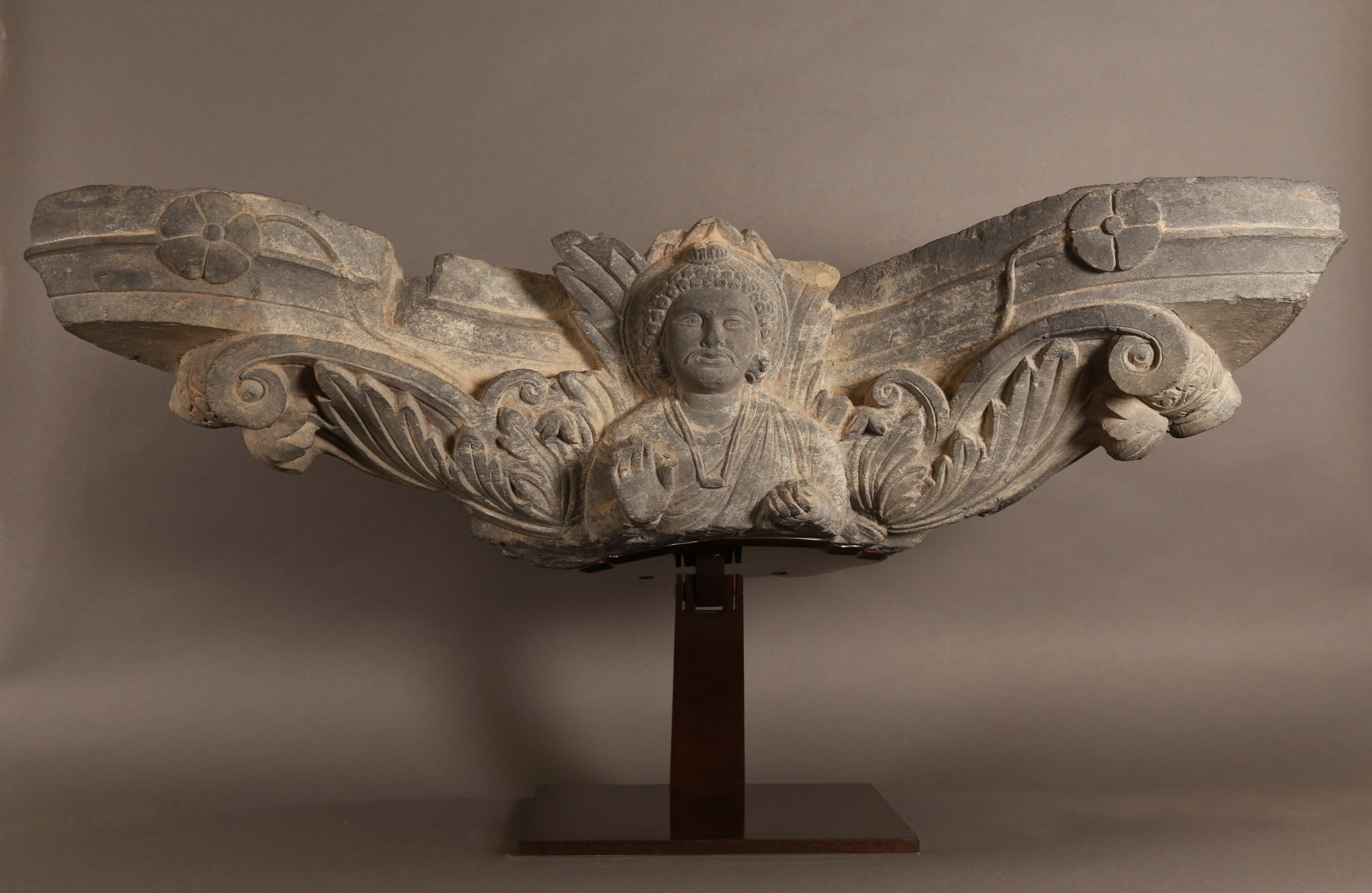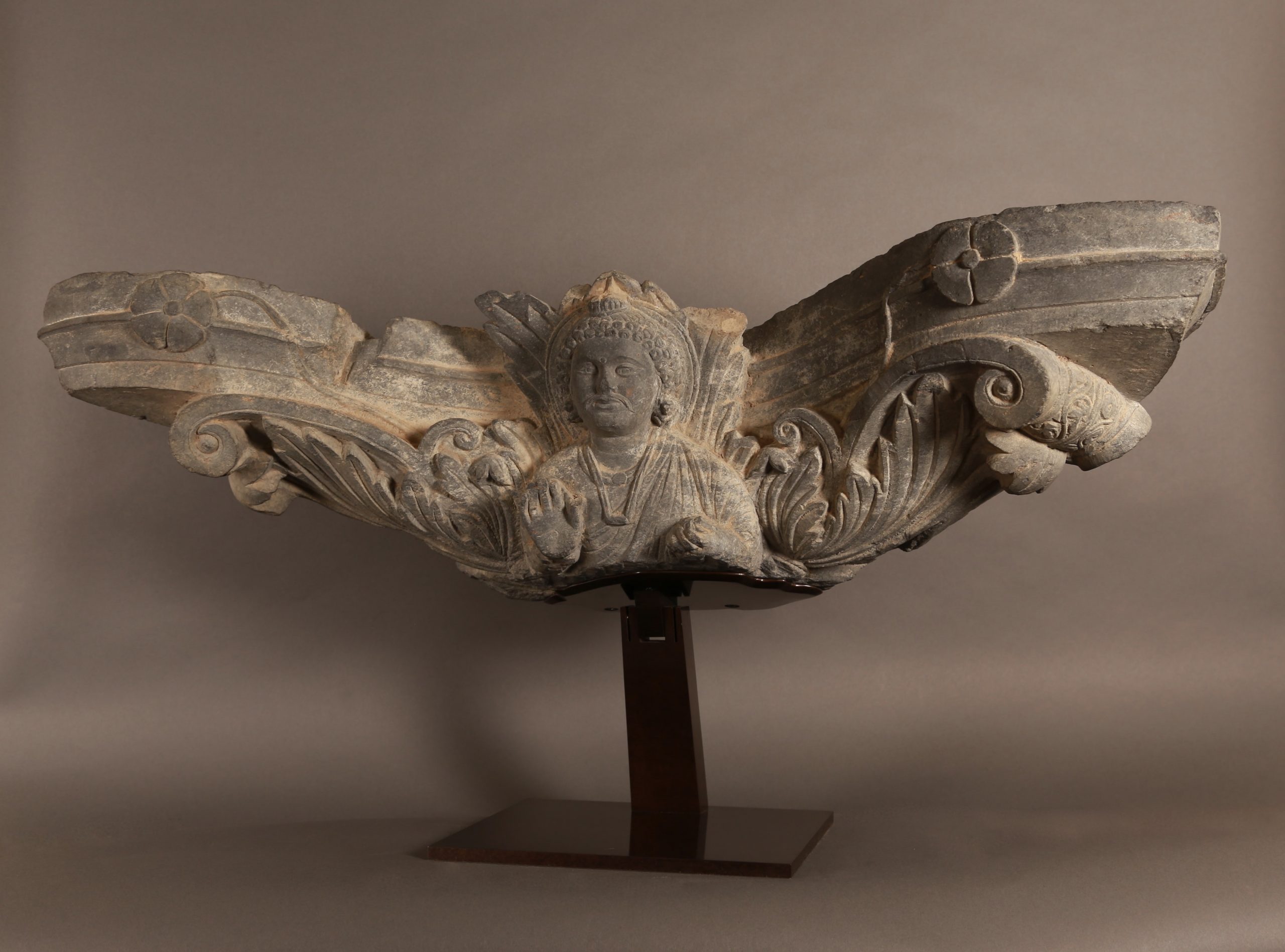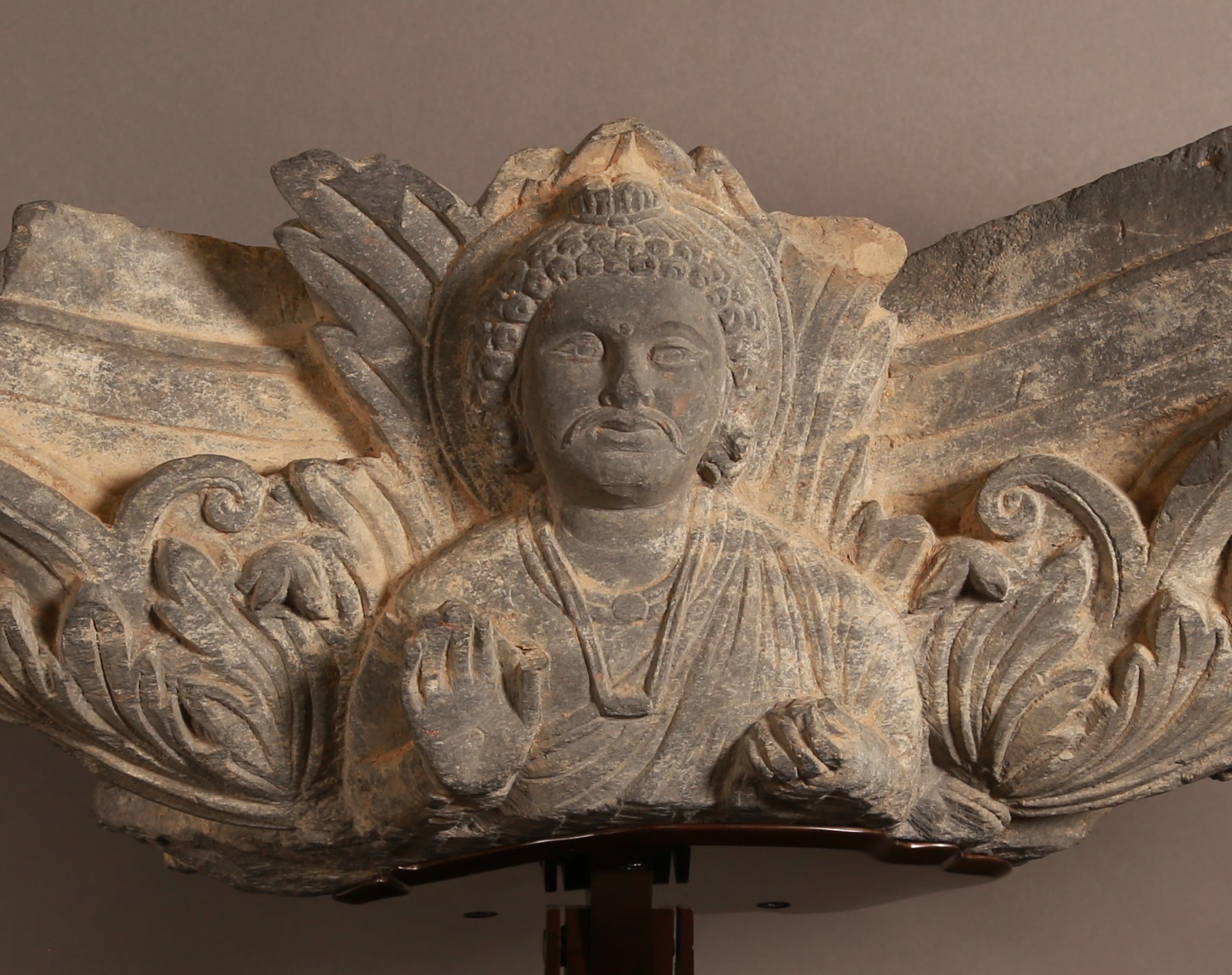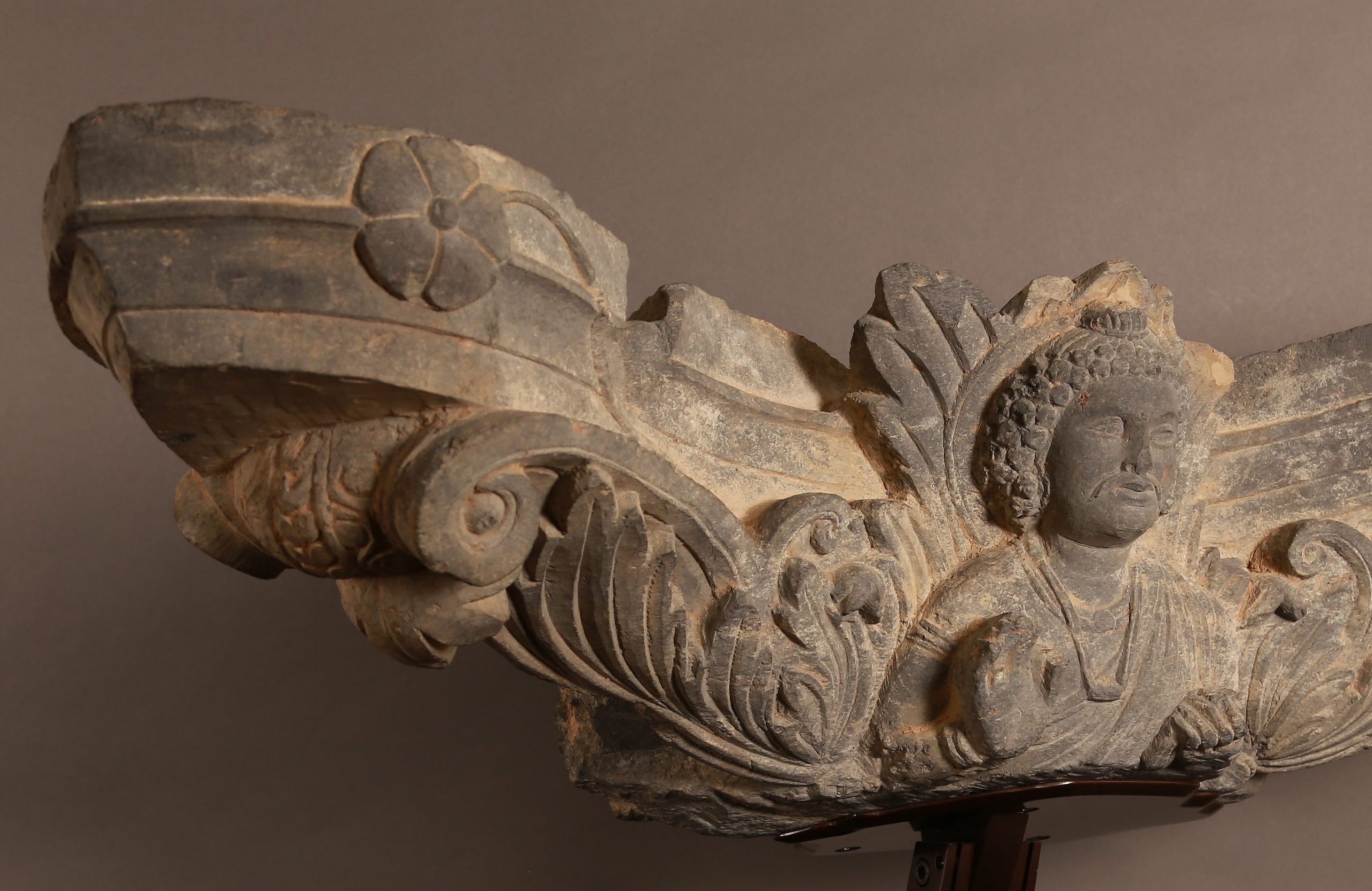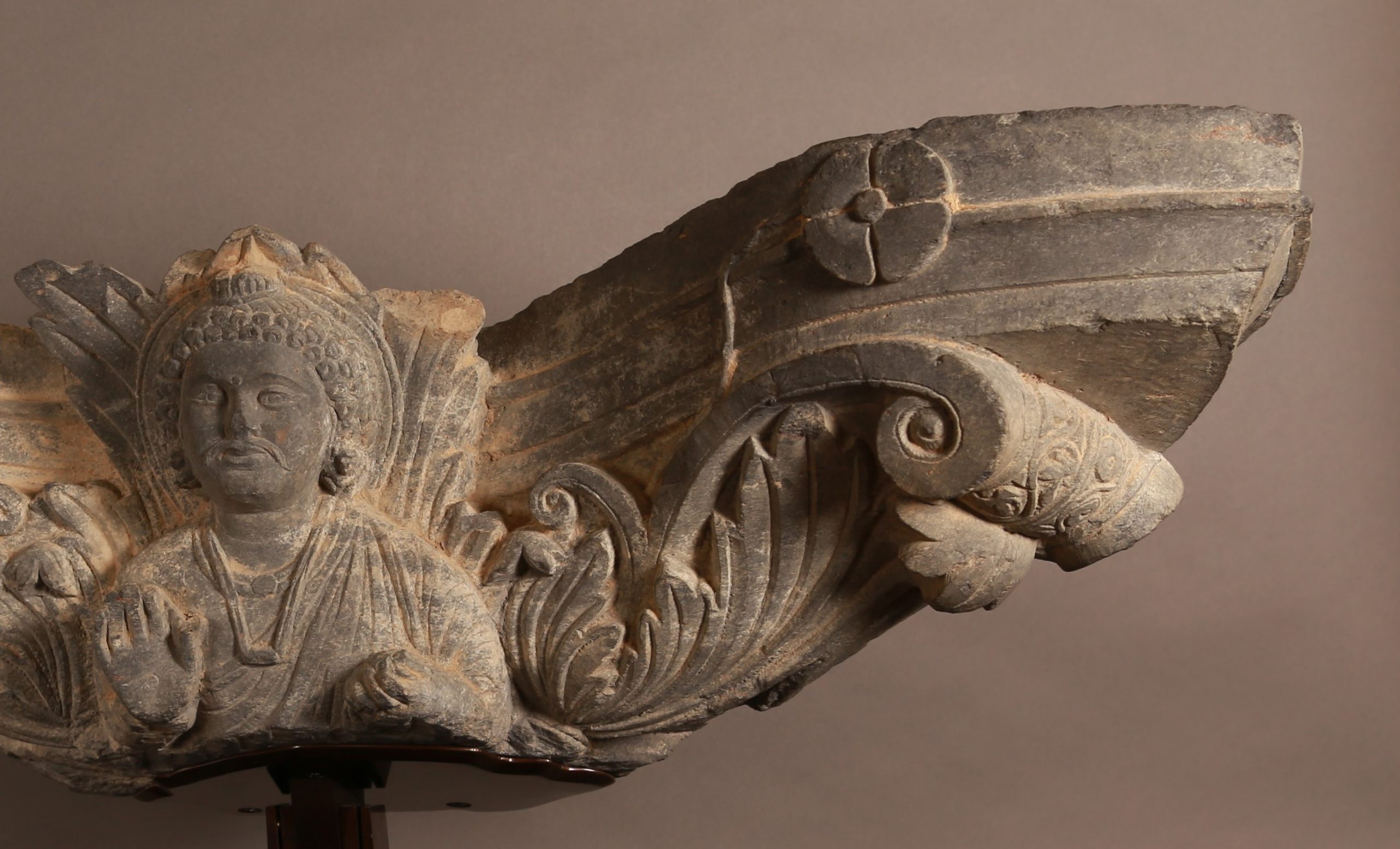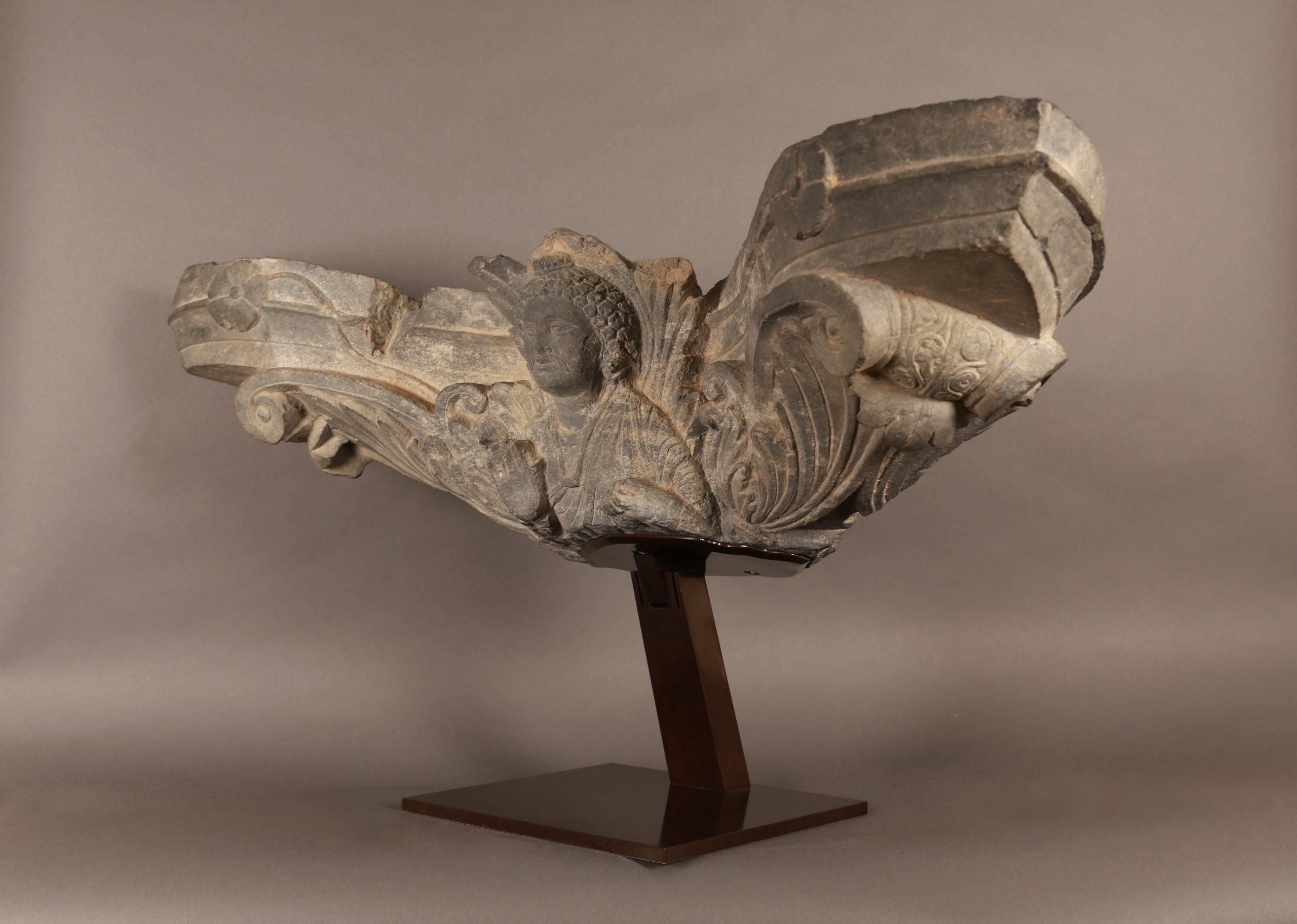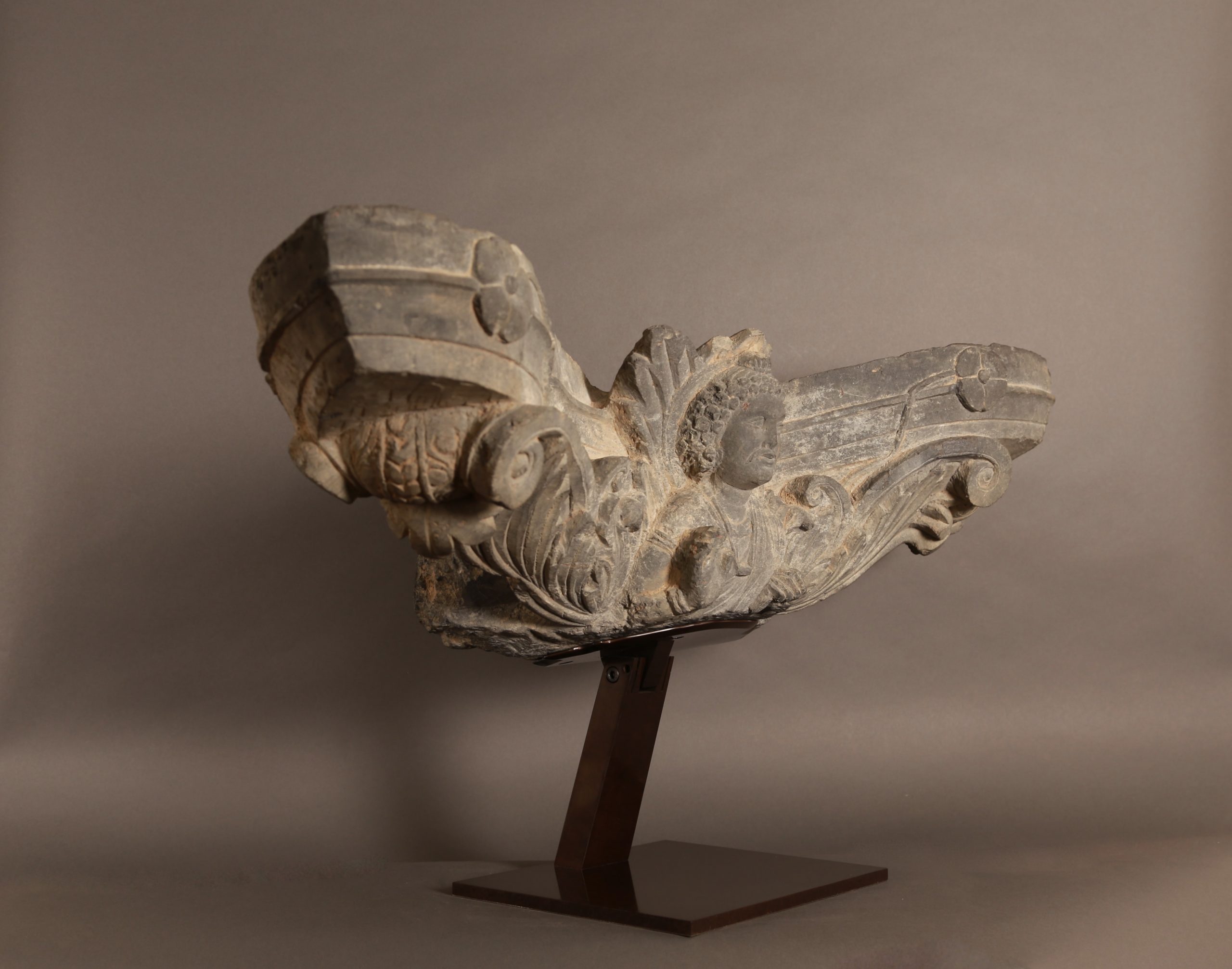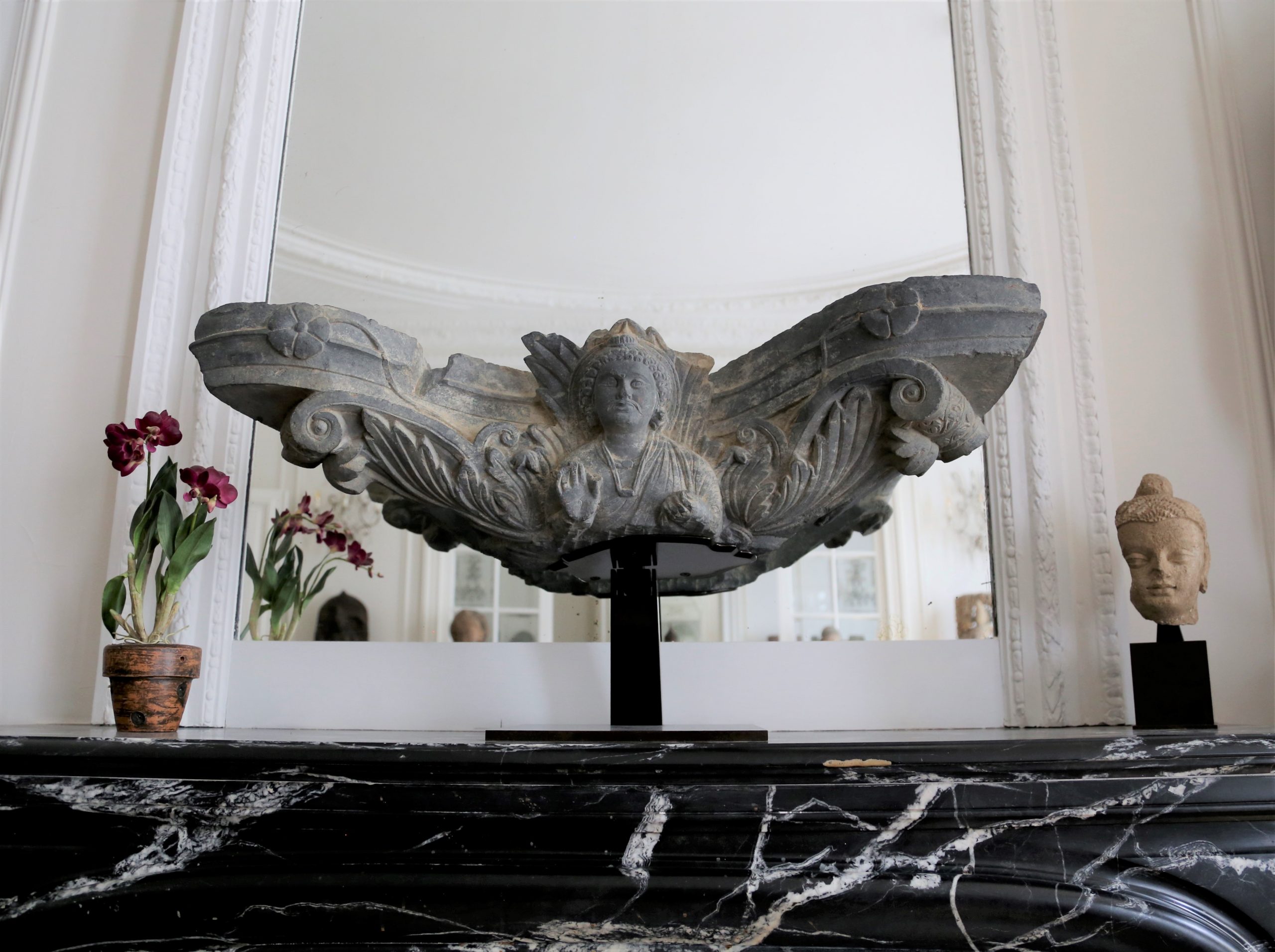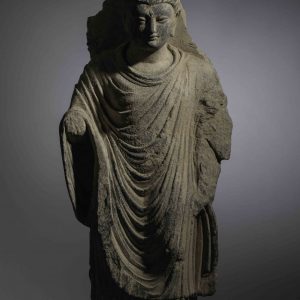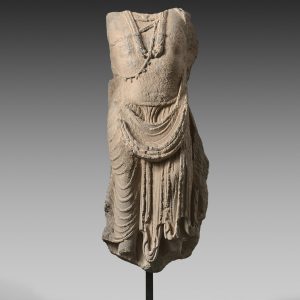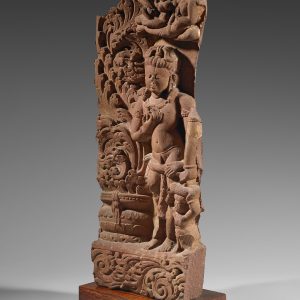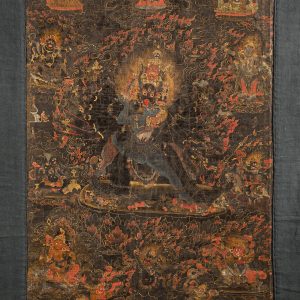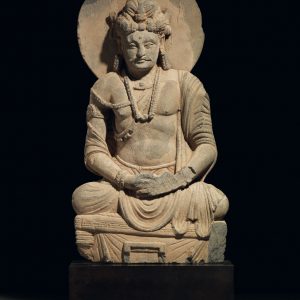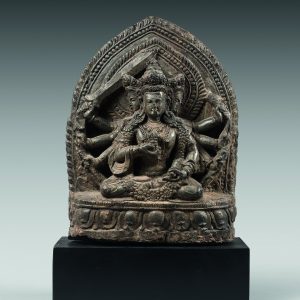Monumental Gandhāran capital
Schist
Ancient province of Gandhāra
3rd-4th century
D. 20 x 89 cm or 7 ⅞ x 35 in
Description
An undeniable Hellenistic heritage
This monumental sculpture is an impressive Indo-Corinthian capital, a word that shows the influence of Greco-Roman art on the artistic production of Gandhāra. The flat molded part – the abacus – is nicely decorated with two open lotuses figured on the corners and coming from wavy stems. Under this abacus, two large acanthus leaves with well-cut ends and delicate veins blossom under large volutes finely decorated with plant scrolls. This magnificent floral and vegetal decoration stands out for its incredible refinement.
The bodhisattva: a spiritual being of primary importance
Other smaller acanthus leaves surround a bodhisattva in the center, forming a canopy above him. This bodhisattva, of a significant size, is typical of Gandhāran iconography, which places great importance on these spiritual beings “promised to an Awakening”, the specific state of historical Buddha before their “Enlightenment”. They are depicted as royal figures because the Buddha himself was a prince before he renounced this life and finally attained Enlightenment. They cannot go backwards in the cycle of reincarnation, feel compassion for all sentient creatures of the earth and only wish to break free of the causal loop along with them. Here, this bodhisattva is sketching the fear-allaying gesture (abhaya mudrā) with his right hand and may be holding a part of his garment with his other hand. Like the Buddha, he has a tuft of hair (ūrṇā) between his brow bones and the uṣṇīṣa, the cranial protuberance incorporated into his bun: Both symbols of his omniscience. Sumptuous jewelry and drapes give Gandhāran bodhisattva a princely look, in the style of contemporary Kushan princes. These Kushan princes, who ruled the kingdom at that time, contributed with their donations to Buddhist monasteries. So it is like a prince that this bodhisattva wears a moustache and is dressed in Indian style with a long scarf covering his left shoulder while the other is left bare. He has the precious and characteristic Indian jewelry: A first large, flat, articulated necklace; a second longer necklace with a rich pectoral; heavy earrings, and bracelets on the arm and wrist. It is also worth noting the remarkable care taken in the realization of the features of his face and his curly hair.
A work with an architectural function
The Gandhāran monasteries had two types of areas: courtyards accessible to devotees and crowded with all sorts of ex-voto monuments, such as reliquary tumuli (stūpa) and chapels, and beyond that an area reserved only for monks. In the public areas, the door or niche surrounds could take the form of pilasters, topped by Corinthian or composite capitals. These architectural elements are also found in miniature on the many Gandhāran reliefs, juxtaposing decorative motifs and apologetic narrative scenes, and in which they separate the scenes and structure the representations. Here, on the top of our capital, mortises indicate that it must have been placed under an upper element, and one can imagine that it was embedded in the masonry, surmounting a column engaged in a wall.

